Introduction
Climbing is a physically demanding and exhilarating sport that requires a combination of strength, balance, coordination, and flexibility. Unfortunately, when injuries to the shoulder occur some elements of good shoulder function tend to be negatively impacted. With any good Physical Therapy program, the compromised elements are found and targeted with exercise to restore function. For climbers it is important to find exercises that train the shoulder to specifically meet the demands of the sport. Climbing, being unique in that the effortful part of the activity is primarily a closed kinetic chain activity, should incorporate those types of movements into any good rehabilitation program.
Understanding Closed Kinetic Chain Exercises
Closed kinetic chain exercises involve movements where the distal end of a limb (hands or feet) is fixed or stabilized, while the proximal muscles (closer to the body) contract to produce movement such as pulling down on a climbing hold. This is in contrast to open kinetic chain exercises, where the distal end of the limb is free to move as if for throwing a ball. In the context of climbing, closed kinetic chain exercises often simulate the movements and muscle activation patterns that climbers encounter on the wall.
The Connection between Closed Kinetic Chain Exercises and Climbing
- Functional Strength: Climbing involves utilizing various muscle groups in a coordinated manner to ascend walls and conquer obstacles. Closed kinetic chain exercises mimic these functional movements, engaging multiple muscle groups simultaneously and enhancing overall strength. Movements like pull-ups, inverted rows, and pistol squats are excellent examples of closed kinetic chain exercises that mirror the functional demands of climbing.
- Stabilization and motor control: Climbers require exceptional stability and motor control to navigate through challenging routes. Closed kinetic chain exercises inherently demand stability as the distal end is fixed, forcing the participant to coordinate their body around the fixed limb. This helps climbers develop better proprioception (awareness of body position) and neuromuscular control, leading to improved stability and performance while climbing. With greater control of the limb and sense of body position climbers can potentially reduce occurrences of painful movements in the shoulder and even enhance performance.
- Joint Integrity: Closed kinetic chain exercises place less stress on individual joints compared to open chain exercises. This is particularly important for climbers who often subject their joints to repetitive stress during climbs. Engaging in closed kinetic chain exercises can help reduce the risk of joint injuries and overuse syndromes while continuing to develop shoulder muscle strength and muscular coordination of the shoulder.
- Core Engagement: A strong core is essential for maintaining body tension and control while climbing. Many closed kinetic chain exercises inherently engage the core muscles to stabilize the body. This translates directly to climbing, where maintaining core tension is crucial for efficient movement and preventing fatigue.
- Specificity: Closed kinetic chain exercises can be tailored to mimic climbing movements. Exercises that involve pulling, gripping, and pushing motions can target the muscle groups needed for climbing, such as the forearms, lats, shoulders, and finger flexors. Incorporating these exercises into your training routine can help you prepare for climbing-specific challenges as you build the injured shoulder back up.
Examples of Closed Kinetic Chain Exercises for Climbers
- Inverted Row: These exercises strengthen the upper body, focusing on the back, biceps, and shoulders. This movement pattern has a high level of specificity for climbing. Due to the instability of the rings, TRX, or portable fingerboard there is added demand for stability which can help to develop rotator cuff and shoulder coordination and stability, so you feel solid pulling in on the wall.
- Push-Ups to Down Dog: Push-ups engage the chest, triceps, and shoulders while also requiring core stabilization. It is also the second most activating exercise for the infraspinatus rotator cuff muscle. Moreover, push ups have many variations that can change the difficulty to meet each individual’s load tolerance.They mimic the pushing movements needed to navigate overhangs and mantles while climbing.
- Thread throughs: These movement patterns place strong demand on the shoulder muscles including those of the rotator cuff and scapula. These movement patterns simulate reaching through and opening up to reach for holds. As with the push ups, there are many varieties of these movements that can be used to find the right difficulty for each individual.
Conclusion
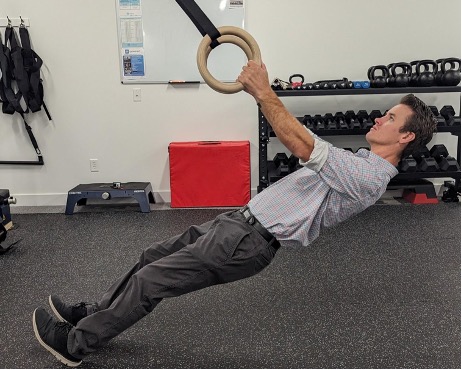
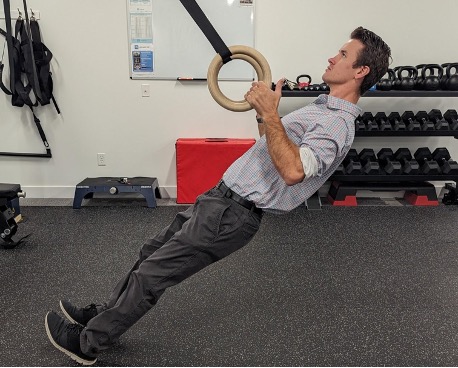
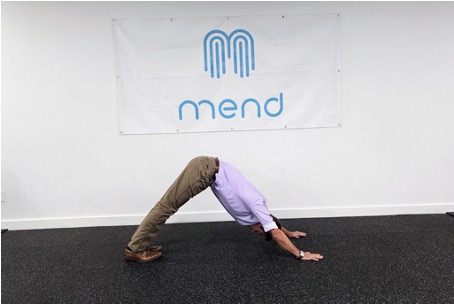
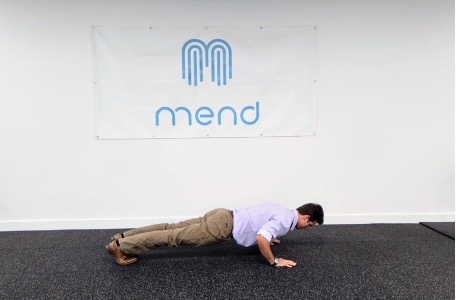
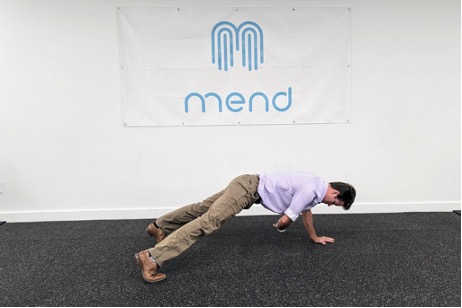
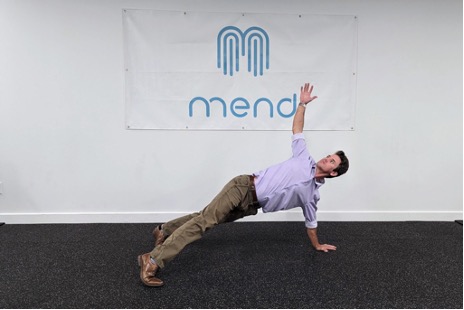 Closed kinetic chain exercises provide climbers with a holistic training approach that mimics the movements and demands of climbing. Incorporating these exercises into your rehabilitation program can lead to improved functional strength, stabilization, motor control, and joint integrity. By enhancing these essential aspects, you can reduce pain and improve shoulder function to get back to crushing your climbing objectives.
Closed kinetic chain exercises provide climbers with a holistic training approach that mimics the movements and demands of climbing. Incorporating these exercises into your rehabilitation program can lead to improved functional strength, stabilization, motor control, and joint integrity. By enhancing these essential aspects, you can reduce pain and improve shoulder function to get back to crushing your climbing objectives.

